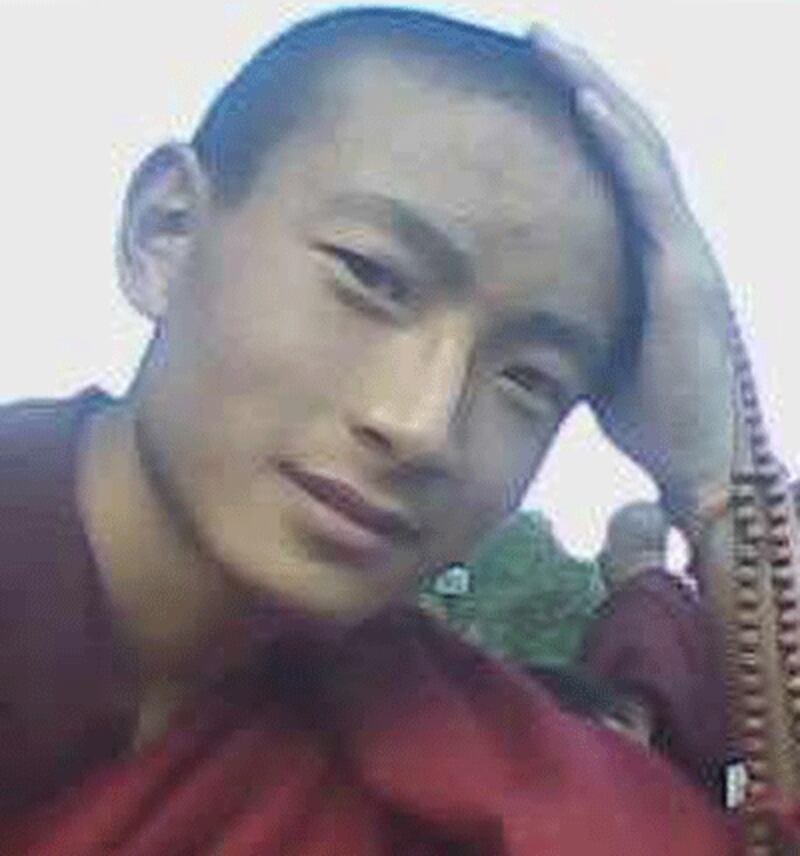A Tibetan teenage monk self-immolated in protest against Chinese rule in the restive Ngaba (Aba) prefecture in Sichuan province Tuesday, raising tensions and fears of a confrontation between security forces and local residents, Tibetan exile sources said.
Lobsang Lozin, 18, shouted slogans and set himself on fire at noon in front of the prayer hall of a monastery in Barkham (in Chinese, Ma'erkang) county in the Ngaba Tibetan Autonomous Prefecture, the sources said.
While on fire, he walked a short distance towards the local government office before succumbing to his burns, according to monks Kanyag Tsering and Lobsang Yeshi, based in the Indian hill town of Dharamsala where the Tibetan government-in-exile is also situated.
"When he set himself alight, he was heard shouting many slogans but nobody could decipher the meaning of them," the two monks said in a statement.
The self-immolation began to draw a large number of Chinese armed police to the Gyalrong Tsodun Kirti Monastery in Barkham "but local residents are getting ready on the Tsodun Bridge to stop the police from advancing," the Central Tibetan Administration said in a statement.
"So there is fear of clash between the local residents and police," it warned, amid prayer services and preparations for Lobsang Lozin's funeral Tuesday.
A Chinese official at the Barkham government office, when contacted by RFA, asked who was calling and said that it was not "comfortable" for him to say anything and that he didn't know about the self-immolation.
Best student

Lobsang Lozin, son of Jorgye and Tsepopo, was one of the best students in the Gyalrong Tsodun Kirti Monastery.
"The monk was admitted in the monastery at a young age, he was very good in studies, one of the top students in his class and exemplary for this conduct and discipline," Kanyag Tsering and Lobsang Yeshi said.
In March, two monks from the same monastery self-immolated and died after protesting against Chinese rule and demanding the return of Tibet's spiritual leader the Dalai Lama.
Chinese policies challenged
The latest incident brings to 44 the total number of self-immolations reported since February 2009 as Tibetans challenge Chinese policies which they say have robbed them of their rights.
Most of the self-immolations have occurred in the Tibetan-populated provinces of Sichuan, Qinghai, and Gansu.
The burnings have intensified over the past year and resulted in a Chinese security clampdown in these areas and the Tibet Autonomous Region.
Amid the tensions, the authorities have detained hundreds of monks from monasteries and jailed scores of Tibetan writers, artists, singers, and educators for asserting Tibetan national identity and civil rights, exile sources say.
Lobsang Sangay, the Tibetan prime minister in exile, suggested that the self-immolations reflected the lack of freedom of speech and conventional forms of protest in China, saying participants in simple demonstrations run a high risk of arrest, torture and even death.
"Denied the right to less extreme forms of protest, Tibetans are setting fire to themselves as political action," he said in an opinion piece in the Washington Post last week.
Nearly all the self-immolators have been younger than 50 years of age, he said, indicating that they were born and brought up under the occupation of Tibet that has lasted since 1959, when the Chinese government promised a “socialist paradise.”
"These Tibetans were intended to be the 'primary beneficiaries' of the Chinese political system and its education, economy and culture. Instead, they serve as a clear indictment of the Chinese government’s failed policies for Tibet: policies founded on political oppression, social marginalization, cultural assimilation and environmental destruction."
"These are the root causes of the demonstrations and the deaths," Sangay said.
Chinese authorities however have labeled the self-immolators as terrorists, outcasts, criminals, and mentally ill people, and have blamed the Dalai Lama for encouraging the burnings.
Reported by RFA's Tibetan service. Translated by Rigdhan Dolma and Dorjee Damdul. Written in English by Parameswaran Ponnudurai.

